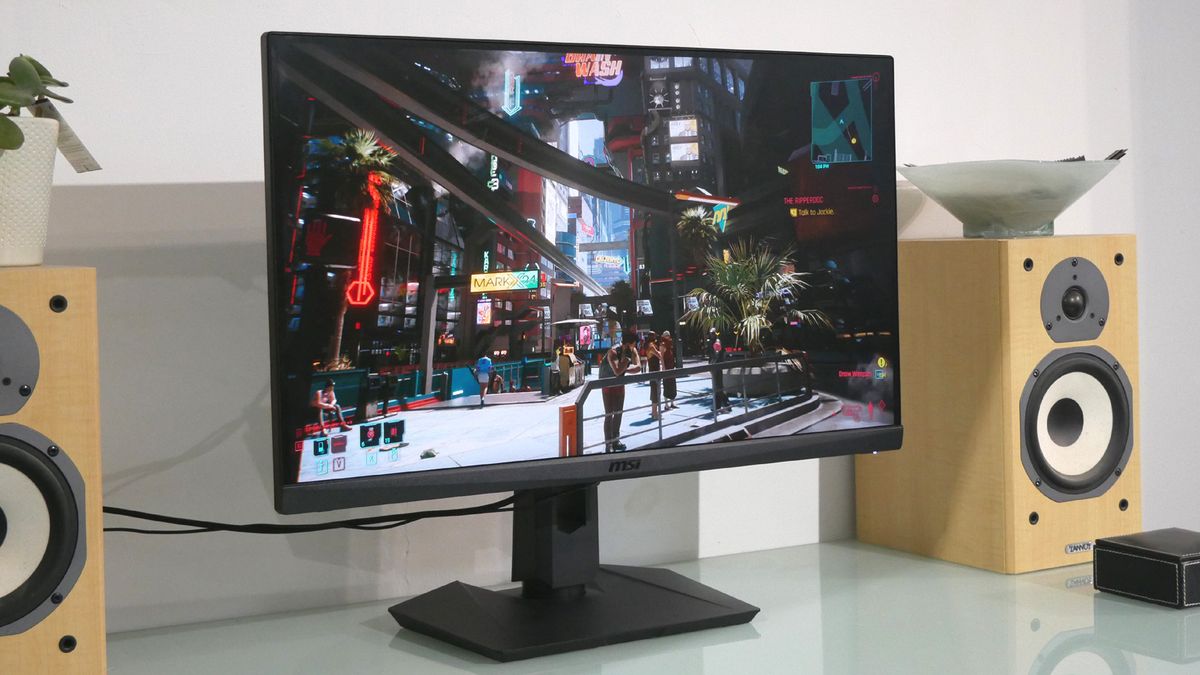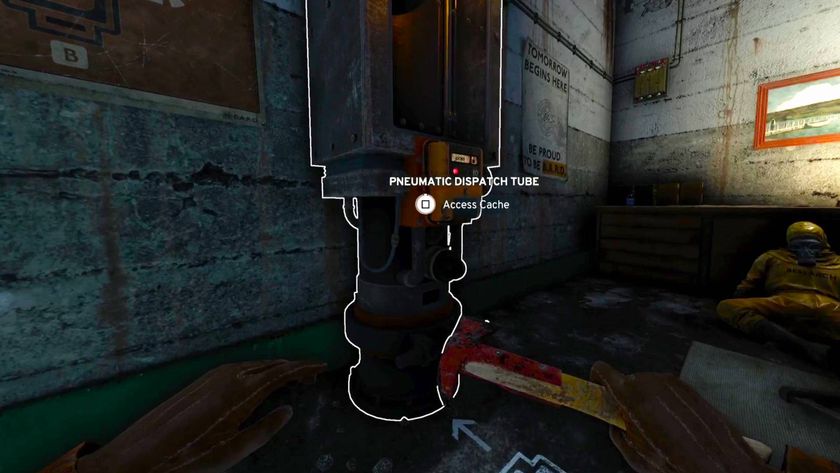12DOVE Verdict
MSI’s 27-inch gaming monitor nails the 1440p high-refresh sweet spot.
Pros
- +
Crazy quick IPS panel
- +
Great all-round feature set
- +
Excellent colour coverage
Cons
- -
Expensive for a 1440p panel
- -
Only 15W USB-C charging
- -
Limited HDR support
Why you can trust 12DOVE
Is 27-inch and 1440p still the sweet spot for PC gaming on the best gaming monitor? The new MSI Optix MAG274QRF-QD certainly seems to think so. Actually, MSI reckons this super-fast 165Hz IPS panel is a contender for a top PS5 monitor and Xbox Series X monitor, too - for the former thanks to a special compatibility mode designed to compensate for the PS5’s ongoing lack of support for 1440p.
Indeed, this monitor’s overall feature set makes it look like a pretty convincing tool for most jobs. There’s USB-C connectivity and wide colour gamut support, for instance, the latter in part thanks to a backlight with quantum dot technology. Of course, that fat feature set is as well. The MSI Optix MAG274QRF-QD is quite pricey for this class of panel.
Design & Features
Built around what MSI calls a "rapid IPS" panel, the MSI Optix MAG274QRF-QD is rated at 1ms for pixel response. That’s using the tougher grey-to-grey metric rather than MPRT. By the latter measure, this would likely be a 0.5ms screen.
Anyway, It’s certainly a 27-inch model with 2,560 by 1,440 pixels and a maximum refresh rate of 165Hz. MSI pitches it as an esports monitor. While the 165Hz refresh is plenty for most games, it’s a little off the pace for really serious esports on the PC, given 240Hz panels are widely available, the big boys use 360Hz and 480Hz screens are on the way. Remember that hooked up to a console, however, you’ll be limited to a maximum of 120Hz.
You also get compatibility with both AMD FreeSync and Nvidia G-Sync adaptive refresh technology (best G-Sync monitor lists, watch out, potentially), plus the usual gaming niceties including a frame rate counter, various overlaid crosshair options and a bunch of image presets for both multiple gaming scenarios and "office" work. Oh, and MSI’s Mystic Light user-configurable LED ambient lighting tech.
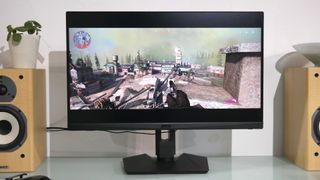
So far, so fairly predictable, albeit mostly impressive, for this kind of monitor. Slightly more unusual is the use of quantum dot technology in the backlight. It boosts colour fidelity enough for MSI to claim very healthy colour fidelity numbers, with 99 per cent coverage of the AdobeRGB space and a particularly impressive 97 per cent coverage of DCI-P3, the gamut used for digital cinema.
Another less common feature for a gaming-centric panel is USB-C connectivity with device charging. The attraction here is the ability to use a single cable to, say connect a laptop, drive the display, attach peripherals and charge the laptop itself. Or at least it would be except the MSI Optix MAG274QRF-QD only provides 15W of charging power, which isn’t really enough for a thin-and-light laptop, let alone a gaming portable. It’s not a deal-breaker for a gaming panel. But if you're going to include USB-C with charging, better to make it actually usable.
Another feature of dubious practical appeal is the console mode which enables the MSI Optix MAG274QRF-QD to support 4K resolution input from the Sony PS5 and downscale it to 1440p. That’s handy in a pinch. The problem is that 4K generates a huge graphics workload. So, you really don’t want to be running at 4K unless you’re getting the full visual benefit. That said, the Xbox Series X does support this monitor’s native 1440p resolution while 1440p support for the PS5 is rumoured to be coming soon, perhaps later in 2021.
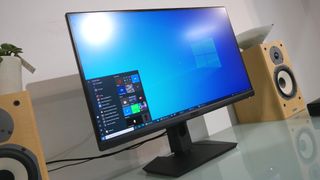
Last on the arguable demerits list is HDR support. The MSI Optix MAG274QRF-QD will process an HDR signal. But it’s not VESA DisplayHDR certified, doesn’t have any local dimming, and is only rated at 300 nits. So, don’t expect a true HDR experience.
As for physical attributes, the MSI Optix MAG274QRF-QD sports slim bezels on three sides of its IPS panel, plus a fully adjustable stand, including rotation into portrait mode. Overall, the MSI Optix MAG274QRF-QD certainly seems to tick an awful lot of boxes. Is there any kind of gaming at which it won’t excel?

Performance
What’s most impressive about this MSI’s performance? In a word, speed. This thing is crazy fast. OK, the 165Hz refresh isn’t up there with the very fastest gaming panels, but it’s plenty for all but the most discerning esports addicts. More to the point, the pixel response is something else. MSI offers three levels of user-configurable overdrive for accelerating pixel response. It’s quick in any mode and the fastest mode is actually usable with only a hint of overshoot and inverse ghosting. Knock it down a notch and you get pretty much flawless quality and outstanding speed. If there’s a noticeably faster IPS monitor out there right now, we’d like to know what it is.
Of course, the 1440p resolution contributes to the sense of speed. You’ve got half a chance of generating high frame rates on PC or console and making the most of that 120Hz-plus refresh. All of which makes for really fizzing, responsive performance in online shooters and battle royale fests like Apex Legends and Fortnite. The MAG274QRF-QD is sharp, lag-free, and just plain fast.
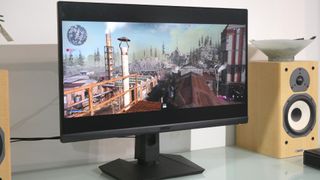
If you’re more into single-player graphics fests like CyberPunk 2077 (now, at least, maybe not originally) or The Witcher III, this is still a convincing gaming panel. The colours are vibrant and there’s more pop than you might expect given the 300 nit brightness rating.
The only problem is that, at this price point, larger and more cinematic displays are available, though typically not with comparable pixel response and overall speed. The same goes for driving games. You might decide a larger though less capable monitor delivers better overall bang for buck in Forza, for example.
When you’re not gaming, this panel is a strong all-rounder, too, thanks to broad colour coverage, great ergonomics, and adequate native resolution.
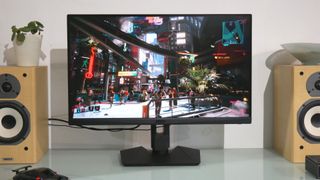
Overall - should you buy it?
As an all-round gaming panel on PC, the MSI Optix MAG274QRF-QD is very convincing. It’s super quick, uber sharp, and oh so responsive. OK, it lacks true HDR capability, but so do most so-called HDR monitors.
Size is a bit more of a problem at this price point. 27 inches makes sense on the desktop as an all-round monitor for gaming, web browsing, and work. But for more dedicated gaming duties, something a bit bigger might be a better fit, especially for console gaming. Speaking of the latter, this isn’t a great choice for the PS5, even with its compatibility mode. At least not until Sony adds 1440p support.
For everything else, this is an impressive if pricey panel. If you favour precision and speed over outright proportions, get the MSI Optix MAG274QRF-QD on your shortlist, pronto.
Looking for a machine to team with your new monitor? Check out the best gaming laptops and best gaming PCs.
A serious dissertation on the finer points of input lag and overshoot followed by a forensic examination of AI-accelerated temporal upscaling. Such is a routine day in the working life of long-time tech wordsmith, Jeremy Laird. Along with GamesRadar, Jeremy’s 15-year back catalogue includes a host of tech and gaming outlets, including TechRadar and PC Gamer, not to mention contributions to mainstream media from the Independent to the Evening Standard. Complimenting Jeremy’s debilitating addiction to all kinds of digital hardware, he is also afflicted by an obsession with and a significant occupational sideline in cars and automotive technology.
